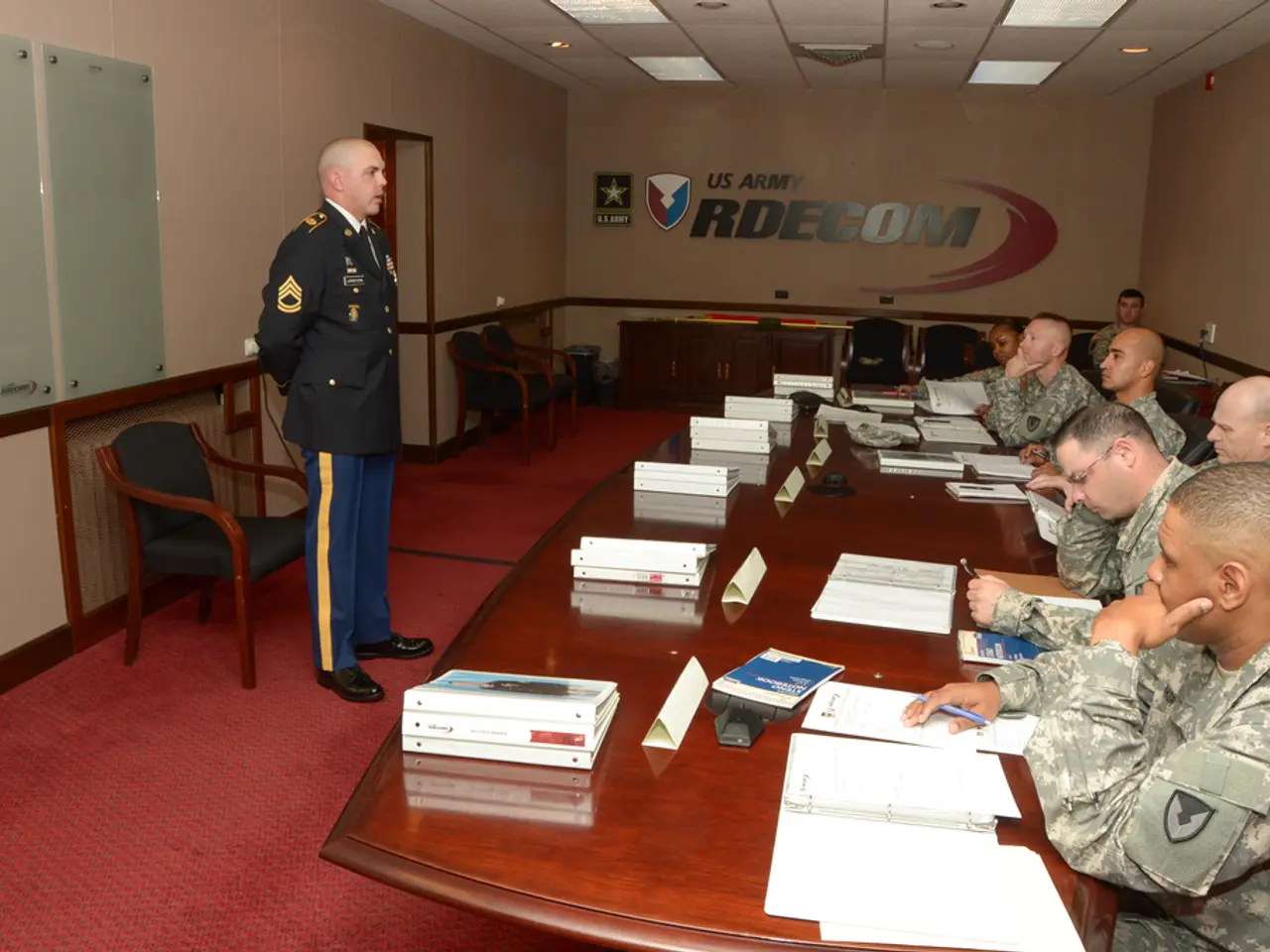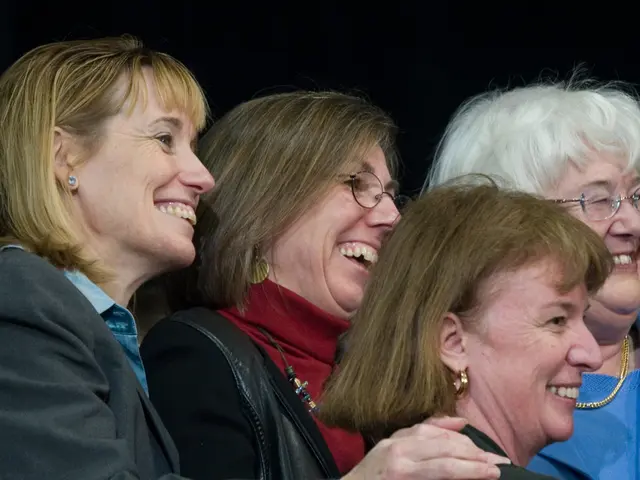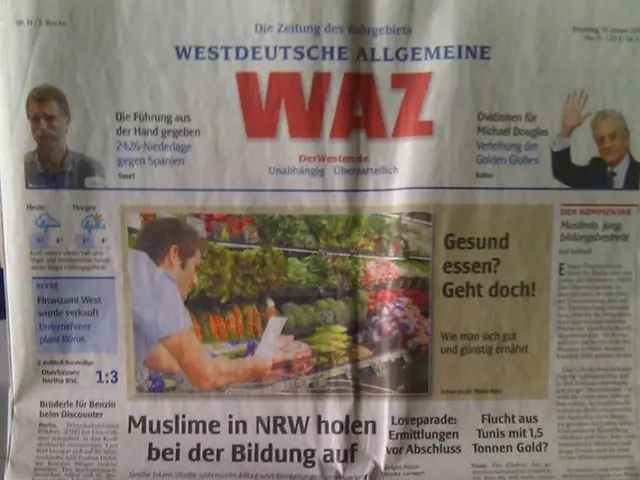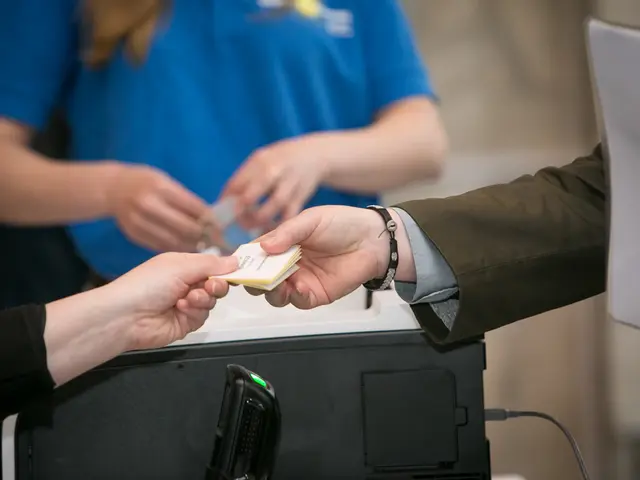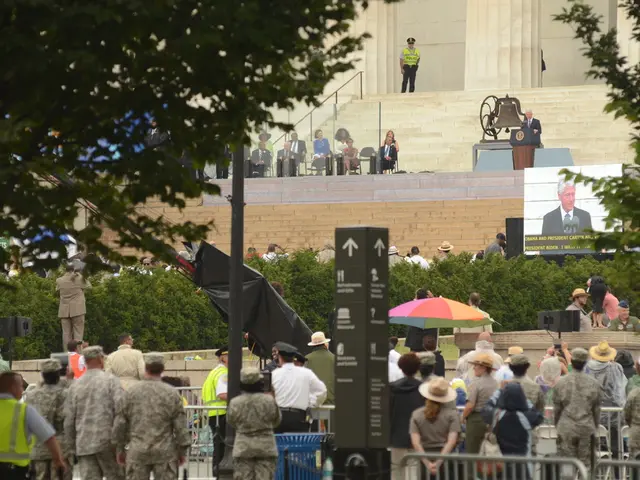Government Official Plans to Establish Initial Immigration Center by 2025 - Government official pushes for initial operation of border removal by 2025
The future of the Dublin Center in Eisenhüttenstadt, initially designed for quick transfer of asylum seekers without residence permits to Poland, remains uncertain due to the potential end of direct returns at the border. This development could render the facility obsolete.
In a recent announcement, Brandenburg’s Interior Minister René Wilke outlined plans for a reorganization of the state's immigration policy. The restructuring focuses on three specific types of facilities: a deportation (Ausreiseeinrichtung) facility, a transition (Übergangseinrichtung) facility, and a detention (Abschiebehafteinrichtung) facility for criminal migrants.
The deportation facility is intended for individuals with no chance of residence rights who must leave the country. The aim is to have the first such facility operational by 2025. The transition facility, on the other hand, is meant for those willing to integrate by learning the language, working, and contributing to society. It serves as a step towards successful refugee integration and is expected to open this year.
The detention facility will house migrants who have committed crimes and pose a danger to the public. Setting up this facility is complex and will require structural development. Initial steps for its implementation may start in 2025 as well, but no specific locations have been named yet.
Minister Wilke emphasized that these measures form a new approach to managing migration in Brandenburg. Initial decisions are expected in 2025, with a goal to implement the first facilities within the year. He stressed the importance of creating structures that differentiate between migrants who can stay and contribute and those who must be deported or detained.
In addition, Wilke has advocated for other immigration-related policies, such as requiring acknowledgment of Israel’s right to exist for German citizenship applicants in Brandenburg, but this is separate from the facilities question.
The Dublin Center, located in Eisenhüttenstadt, has accommodated fewer people than its capacity. Meanwhile, Brandenburg's largest initial reception facility is located in Eisenhüttenstadt, with additional facilities in Frankfurt (Oder) and Wünsdorf. No locations for the planned deportation facilities have been named yet.
Refugee organizations hope for a quick end to the Dublin Center, while Wilke considers the reorganized and built-up system, including the detention facility, smart. It remains unclear whether direct returns at the border will continue to be legally possible.
This article was originally published by the German Press Agency.
[1] Brandenburg’s Interior Minister René Wilke announced plans for a reorganization of immigration policy focusing on three specific types of facilities: a deportation (Ausreiseeinrichtung) facility, a transition (Übergangseinrichtung) facility, and a detention (Abschiebehafteinrichtung) facility for criminal migrants. The deportation facility is intended for people with no chance of residence rights who must leave the country; the aim is to have the first such facility operational in 2025. The transition facility is meant for those willing to integrate by learning the language, working, and contributing to society, serving as a step toward successful refugee integration. The detention facility will house migrants who have committed crimes and pose a danger to the public; its setup is complex and will require structural development, with some interim solutions possibly starting in 2025 as well.
[2] Wilke emphasized that these measures form a new approach to managing migration in Brandenburg, with initial decisions expected in 2025 and a goal to implement the first facilities within the year. He did not disclose specific locations for these sites but stressed the importance of creating structures that differentiate between migrants who can stay and contribute and those who must be deported or detained.
[3] In addition, Wilke has advocated for other immigration-related policies, like requiring acknowledgment of Israel’s right to exist for German citizenship applicants in Brandenburg, but this is separate from the facilities question.
[4] No location for the detention facility has been named yet. The capacity of the detention facility is also yet to be revealed.
- The new community policy proposed by Brandenburg's Interior Minister René Wilke involves the establishment of three types of facilities, including vocational training centers (transition facilities) for those willing to integrate, aiming to open these facilities this year and in 2025.
- In policy-and-legislation discussions, the emphasis is on creating a smart immigration system in Brandenburg, with a detention facility for criminal migrants, but the location and capacity for this facility remain uncertain, as well as the time frame for its implementation.
